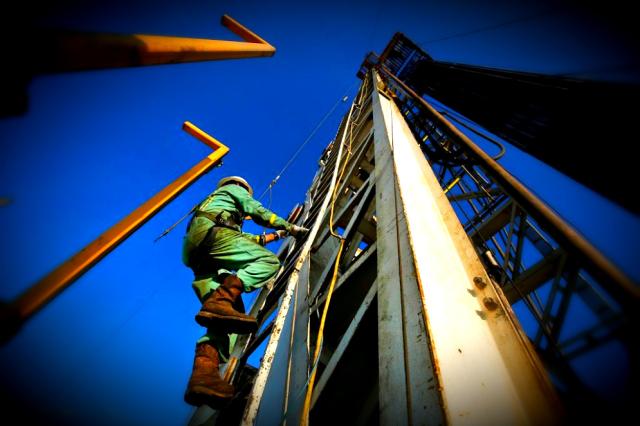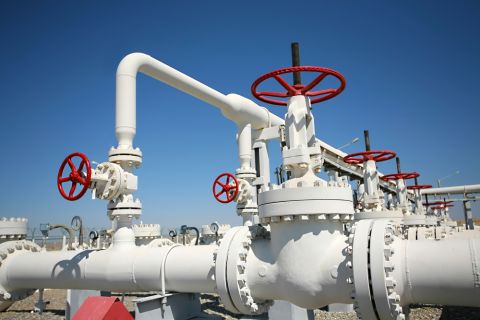
The oil and gas industry today is being squeezed through a painful transformation, one it didn’t choose but is complicit in causing. (Source: Hart Energy)
[Editor's note: A version of this story appears in the March 2020 edition of Oil and Gas Investor. Subscribe to the magazine here.]
A woman across from me at the gas pump asked, rather exuberantly, “Who do we have to thank for these low gas prices?” The price for the day was $1.88 a gallon. “Low oil prices,” I said, “and the industry is hurting. People are losing jobs.” I might have tamped down her enthusiasm a bit.
After essentially five years of an ongoing downturn, the oil and gas industry is desperately seeking solace. The bad news, in my opinion, is not yet. 2020 will be a year of continued trial by fire.
And that’s not a bad thing.
The industry today is being squeezed through a painful transformation, one it didn’t choose but is complicit in causing. In the early part of this New Year and new decade, oil and gas prices have swooned to below $50/bbl WTI and $2/Mcf, respectively. Demand for each has taken a hit with the coronavirus shutting down Chinese consumers and a warm winter crushing gas. But supply remains the ultimate reason for our conundrum. Simply, we continue to produce too much. Still.
I could wax eloquently on the myriad upsides American ingenuity has produced—the geopolitical shift away from Middle East dependence, stunningly low power generation costs—but in the present it really comes down to the money. Investors supplying the industry with capital aren’t making any, and they’re taking their cash and going to someone else’s house until you show them how they can.
Which brings us to what must happen. What is happening. Think retro.
“The ’90s are calling, and they want their metrics back,” quipped Evercore managing director Marcel Hewamudalige, speaking at IPAA’s Private Capital Conference. His point: Oil and gas companies must once again become real, sustainable businesses.
Before shale took off, the traditional conventional E&P model generated ample cash flow with reinvestment ratios that left room for shareholder payouts, he noted. Then shale hit—along with sustained outspends for more than a decade and a massive destruction of capital invested. For those that funded the inventory build, the payout never came.
“It’s unbelievable that we went that long with that type of business. At this price level it just doesn’t work. And the capital markets are changing their tune about how they want to participate in this next phase of the sector.”
The market, he said, is demanding a return to traditional value creation principles. A new energy model built on the old.
“Ultimately, the metrics we’re going to be talking about are not single-well economics or a hundred thousand years of Tier 1 inventory. It’s going to be recycle ratios, ROCE [return on capital employed], sub-10% declines. All of that is going to translate to cash in your pocket, and that’s where the industry needs to go.”
Rethinking management compensation will be a critical factor as well. Historically, compensation rewards were tied to production growth, but that metric has actually been the worst correlation to shareholder return over the past five to 10 years, Hewamudalige said. Instead, reward managers by measuring returns-focused cash flow. “How much cash do you deliver to shareholders? That’s how you’re going to get paid.”
Evercore estimates oil to reach $70 in the next 12 to 24 months, he said, and E&Ps that can achieve free cash flow and deliver money back to investors in the current environment “are going to be cash-flow machines” when that happens. “Institutional investors are going to come back and invest in those guys.”
Precious few are there now, and not every company will get there. “North America is full of companies on the E&P side that probably shouldn’t be here anymore,” he said. “There’s too much debt in the system and those guys won’t survive.”
A “towering wall of debt maturities” looms over many E&Ps coming due this year and next, he noted. “This is going to be a huge part of this next year and a huge part of the asset supply” coming to market, said Hewamudalige. And this will be the turning point between industry demolition and reconstruction, he suggested.
“The industry needs to break it down and build it back up the right way. It’s critical to get through this part of the cycle irrespective of how painful it is. It’s a key part of what needs to happen.”
Deflated commodity prices will undoubtedly and necessarily exacerbate the vetting. Many companies will undergo restructurings this year, and many will go away. Consolidation will continue in the mid-cap space. They “need to get together and get to that stage,” he said.
It’s been 20 years coming, but it’s a natural and necessary part of the cycle. And like steel fired in a forge, the oil and gas industry will be stronger and purpose-built because of it. For now, endure. And adapt.
Recommended Reading
Brett: Oil M&A Outlook is Strong, Even With Bifurcation in Valuations
2024-04-18 - Valuations across major basins are experiencing a very divergent bifurcation as value rushes back toward high-quality undeveloped properties.
Marketed: BKV Chelsea 214 Well Package in Marcellus Shale
2024-04-18 - BKV Chelsea has retained EnergyNet for the sale of a 214 non-operated well package in Bradford, Lycoming, Sullivan, Susquehanna, Tioga and Wyoming counties, Pennsylvania.
Defeating the ‘Four Horseman’ of Flow Assurance
2024-04-18 - Service companies combine processes and techniques to mitigate the impact of paraffin, asphaltenes, hydrates and scale on production — and keep the cash flowing.
Santos’ Pikka Phase 1 in Alaska to Deliver First Oil by 2026
2024-04-18 - Australia's Santos expects first oil to flow from the 80,000 bbl/d Pikka Phase 1 project in Alaska by 2026, diversifying Santos' portfolio and reducing geographic concentration risk.
Ozark Gas Transmission’s Pipeline Supply Access Project in Service
2024-04-18 - Black Bear Transmission’s subsidiary Ozark Gas Transmission placed its supply access project in service on April 8, providing increased gas supply reliability for Ozark shippers.




